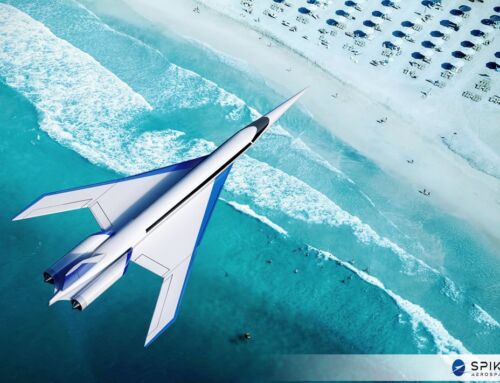
June 10, 2025 — In a landmark move last week, President Trump signed an executive order directing the FAA to repeal the longstanding ban on civilian supersonic flight over land. This 1973-era restriction has for decades prevented travelers from experiencing the full potential of fast, efficient, coast-to-coast air travel.
Now, that’s changing—and it’s opening the door to a future where flights between cities like Washington, DC and Los Angeles take just a few hours. Business leaders could depart in the morning, handle meetings on the West Coast, and still be home in time for dinner on the East Coast.
At Spike Aerospace, we see this as a defining moment. Not just for aviation, but for every global enterprise that values time, agility, and smart connectivity.
—
Why This Matters
When the Concorde was retired in 2003, it had flown more than 3 million passengers and proven that commercial supersonic travel was not only possible—it was extraordinary. But even at the height of its popularity, Concorde was never allowed to fly supersonic over land, limited instead to transoceanic routes.
Why? Because it generated a loud, disruptive sonic boom—a shockwave that rattled windows and drew complaints anytime it passed over populated areas. As a result, the general public never got to enjoy supersonic flights across the country, and the promise of faster air travel remained frustratingly out of reach.
This new executive order acknowledges how much has changed. With new advances in aerodynamics and materials, it’s now possible to design aircraft that fly at supersonic speeds without producing an audible sonic boom on the ground.
And that’s where Spike Aerospace comes in.
—
Spike’s Vision: Full-Speed, Low-Boom Flight
Some aircraft developers are exploring ways to fly just above the speed of sound—around Mach 1.1 to 1.3— staying technically “supersonic” while avoiding the boom. But here’s the catch: you don’t actually save that much time. The improvement over today’s commercial aircraft is marginal at best.
At Spike Aerospace, we’re building an aircraft—the S-512 Diplomat—that goes all in. It’s engineered to fly at Mach 1.6, delivering the full speed and full benefit of supersonic travel. But with one crucial difference: no disruptive sonic boom reaching the ground.
That’s a much tougher problem to solve—but it’s not impossible. By using aerodynamic shaping to control the pressure waves an aircraft generates at high speed, we can drastically reduce or even eliminate the boom.
The result? A true supersonic experience, without the noise.
Because if you’re building the future of aviation, you shouldn’t settle for just looking fast—you should be fast.
—
What This Means for Global Business
For companies with international operations, remote teams, and high-stakes decisions, time is leverage. Supersonic flight shrinks the world and expands opportunity.
Here’s what it unlocks:
– Coast-to-coast trips in half the time
– Fewer overnight stays and jetlag disruptions
– Faster response to client needs and market shifts
– More time where it matters—at home or in the boardroom
Faster travel doesn’t just save hours—it changes what’s possible.
—
What’s Next
This executive order gives the FAA 180 days to repeal outdated restrictions and begin formalizing new certification standards for supersonic aircraft. It’s a clear signal that regulators are ready to support innovation—and that the time for responsible, quiet supersonic flight has arrived.
At Spike Aerospace, we’re moving full speed ahead. Our team is finalizing the next phases of development, advancing partnerships, and preparing to bring the S-512 Diplomat to market.
This is the beginning of a new chapter in aviation.
And we’re proud to be helping write it.
—
Follow Spike Aerospace on LinkedIn and Twitter/X for updates on our progress, insights on the future of flight, and announcements about how you can be among the first to experience supersonic travel reimagined.






